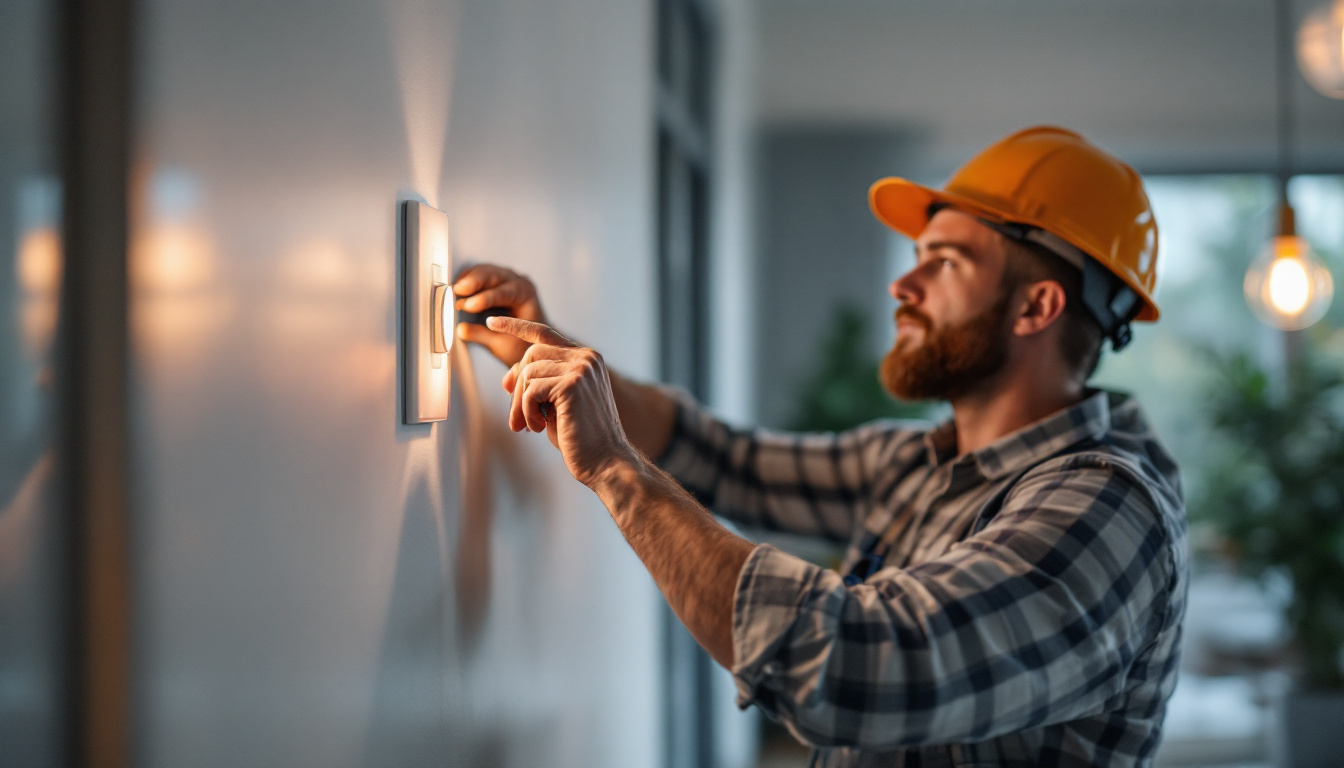
Lighting plays a pivotal role in the ambiance and functionality of hair salons. For lighting contractors, selecting the right fixtures is not merely about illumination but also about enhancing the overall client experience and supporting the precision work of hairstylists. The choice of lighting impacts everything from color accuracy during hair treatments to the mood and aesthetic appeal of the salon environment.
Hair salons demand lighting solutions that combine style with practicality. This dual requirement often leads contractors to weigh the benefits of various lighting options, including chandeliers, recessed lights, track lighting, and LED panels. Each has unique attributes that influence client perception, energy efficiency, and maintenance considerations.
In addition to the aesthetic elements, the functionality of lighting in hair salons is paramount. For instance, bright, white light is essential for detailed tasks such as cutting and coloring hair, as it allows stylists to see true colors and textures without distortion. Conversely, softer lighting can create a relaxing atmosphere for clients during treatments like hair washing or scalp massages. This balance between task-oriented and ambient lighting is crucial for ensuring that both stylists and clients feel comfortable and engaged throughout their experience.
Moreover, the strategic placement of lighting fixtures can significantly affect the salon’s perceived size and openness. Well-placed lights can create a sense of spaciousness, making even smaller salons feel inviting and airy. Additionally, incorporating dimmable options allows salons to adjust the lighting according to different times of the day or specific events, such as promotional nights or special occasions, further enhancing the versatility of the space. This adaptability not only improves the client experience but also showcases the salon’s commitment to providing a tailored service that meets individual needs.
Chandeliers have long been associated with elegance and luxury. In the context of a hair salon, a chandelier can serve as a stunning centerpiece that elevates the salon’s interior design. For upscale salons aiming to create a memorable first impression, chandeliers contribute significantly to brand identity by signaling sophistication and attention to detail. The choice of chandelier style—be it crystal, modern geometric, or vintage-inspired—can also reflect the salon’s overall theme, further enhancing the customer experience. For instance, a contemporary salon may opt for sleek, minimalist chandeliers that align with a modern aesthetic, while a vintage salon might choose ornate, antique-style pieces that evoke a sense of nostalgia.
Lighting contractors should recognize that the visual impact of a chandelier extends beyond mere illumination. It often becomes a conversation piece and a key element in marketing materials such as photographs and social media posts. This makes chandeliers particularly valuable in salons targeting high-end clientele. The right chandelier can create a backdrop for Instagram-worthy moments, encouraging clients to share their salon experiences online. Furthermore, the unique design of a chandelier can help differentiate a salon in a competitive market, making it instantly recognizable and memorable to potential customers.
Chandeliers typically provide ambient lighting that can be diffused throughout the salon space. This broad illumination helps reduce harsh shadows, which is crucial for hairstylists who rely on consistent lighting to accurately assess hair color and texture. Many modern chandeliers incorporate dimmable LED bulbs, allowing for adjustable light levels that adapt to different times of day or service types. This versatility not only enhances the overall atmosphere of the salon but also allows stylists to create the perfect lighting conditions for various services, from haircuts to color treatments.
However, chandeliers alone may not suffice for task lighting, especially in areas where precision is paramount, such as near styling stations or color mixing zones. Lighting contractors often recommend combining chandeliers with supplementary fixtures to ensure both ambient and task lighting needs are met. For example, adjustable wall sconces or pendant lights can be strategically placed near mirrors and workstations to provide focused light where it’s needed most. Additionally, incorporating smart lighting solutions can offer salons the flexibility to change the ambiance based on the time of day or the mood they wish to create, further enhancing the client experience and ensuring that every detail is attended to during their visit.
Recessed lighting is a popular alternative due to its sleek, unobtrusive design. These fixtures are installed flush with the ceiling, offering a clean and modern look that does not compete with other design elements. For lighting contractors, recessed lights provide flexibility in layout and can be strategically placed to eliminate shadows and highlight specific areas.
From a functional standpoint, recessed lighting excels in delivering uniform illumination. It is energy-efficient and often compatible with LED technology, reducing operational costs. However, recessed lighting lacks the decorative appeal of chandeliers and may not contribute significantly to the salon’s aesthetic or brand image.
Track lighting offers versatility, allowing fixtures to be adjusted and directed to specific zones within the salon. This adaptability is beneficial in dynamic spaces where the layout or service areas may change over time. Lighting contractors appreciate track lighting for its ease of installation and maintenance.
While track lighting provides excellent task lighting, it can sometimes create a more industrial or utilitarian atmosphere, which may not align with the desired ambiance of luxury salons. Additionally, the visible tracks can interrupt clean ceiling lines, which might be a design consideration.
LED panels have gained traction due to their energy efficiency, long lifespan, and ability to produce even, glare-free light. These fixtures are ideal for salons prioritizing modern aesthetics and sustainability. For lighting contractors, LED panels simplify wiring and reduce heat output, enhancing comfort for both clients and staff.
Despite these advantages, LED panels tend to have a minimalist design that may feel sterile or clinical if not balanced with other decorative elements. They are best suited for salons with a contemporary or minimalist design ethos rather than those emphasizing warmth and luxury.
One of the foremost considerations is how lighting affects the client’s experience. Poor lighting can distort hair color perception, leading to dissatisfaction and costly corrections. Lighting contractors should prioritize fixtures that offer high color rendering index (CRI) values—ideally above 90—to ensure colors appear true to life.
Moreover, glare and harsh shadows can cause discomfort and fatigue for both clients and stylists. Chandeliers, when designed with diffusers or layered with other lighting types, can mitigate these issues by providing soft, evenly distributed light.
Energy consumption is a critical factor, especially for salons operating long hours. LED technology, whether incorporated in chandeliers or alternative fixtures, offers significant savings over traditional incandescent or halogen bulbs. Lighting contractors should recommend fixtures that balance aesthetic appeal with energy efficiency to meet client budgets and sustainability goals.
Maintenance is another practical concern. Chandeliers, particularly those with intricate designs, may require more frequent cleaning and bulb replacement. In contrast, recessed and LED panel lights generally demand less upkeep, which can reduce downtime and labor costs.
The ease of installation and future adaptability should also influence the choice. Chandeliers often require reinforced ceiling mounts and careful electrical planning, potentially increasing installation time and cost. Alternatives like track lighting offer greater flexibility for salons that anticipate layout changes or expansions.
Lighting contractors must assess the structural conditions of the salon space and collaborate closely with interior designers and salon owners to ensure the chosen lighting solution integrates seamlessly with the overall design and functional requirements.
A high-end salon in a metropolitan area incorporated large crystal chandeliers as focal points in the main styling area. Lighting contractors paired these with adjustable LED task lights at each station to ensure precision. The result was a space that felt both glamorous and functional, attracting a clientele willing to pay premium prices for the experience.
This project highlighted the importance of layering lighting types and demonstrated how chandeliers could enhance brand identity while meeting technical requirements.
In contrast, a minimalist salon focused on sustainability opted for recessed LED panels throughout the space. The lighting contractor selected panels with high CRI and tunable white light to mimic natural daylight, improving color accuracy. The clean lines and energy savings aligned perfectly with the salon’s eco-friendly branding.
This approach showed that alternative lighting could effectively support salon operations without sacrificing style, especially when paired with thoughtful interior design.
For lighting contractors, choosing between hair salon chandeliers and alternative lighting options requires a nuanced understanding of both aesthetic and functional demands. Chandeliers excel in creating a luxurious atmosphere and reinforcing brand identity, making them ideal for salons targeting upscale markets. However, they often need to be supplemented with task lighting to meet the precise needs of hairstylists.
Alternatives like recessed lighting, track lighting, and LED panels offer advantages in energy efficiency, maintenance, and flexibility. These options can be particularly suitable for salons prioritizing modern design, sustainability, or cost-effectiveness.
Ultimately, the best lighting solution emerges from a careful assessment of the salon’s brand positioning, spatial layout, client expectations, and operational requirements. Lighting contractors who balance these factors can deliver installations that enhance both the beauty and functionality of hair salons, contributing to their long-term success.
Ready to elevate your hair salon’s lighting with the perfect blend of elegance, functionality, and value? Look no further than LumenWholesale for a diverse range of high-quality lighting solutions tailored to your specific needs. Our spec-grade lighting products promise to enhance the beauty and precision of your salon’s workspaces while reinforcing your brand’s luxurious appeal. With unbeatable wholesale prices and the convenience of free shipping on bulk orders, LumenWholesale is your go-to source for premium lighting without the premium price tag. Make the smart choice for your salon’s success and explore our collection for Wholesale Lighting at the Best Value today.

Discover essential tips for lighting contractors to prevent common pitfalls with button light switches.

Discover essential insights and expert tips for lighting contractors on selecting and installing outdoor wall lights.

Discover the key challenges lighting contractors face when installing LED solar outdoor lights.

Discover the common pitfalls lighting contractors encounter when installing emergency lights in homes.